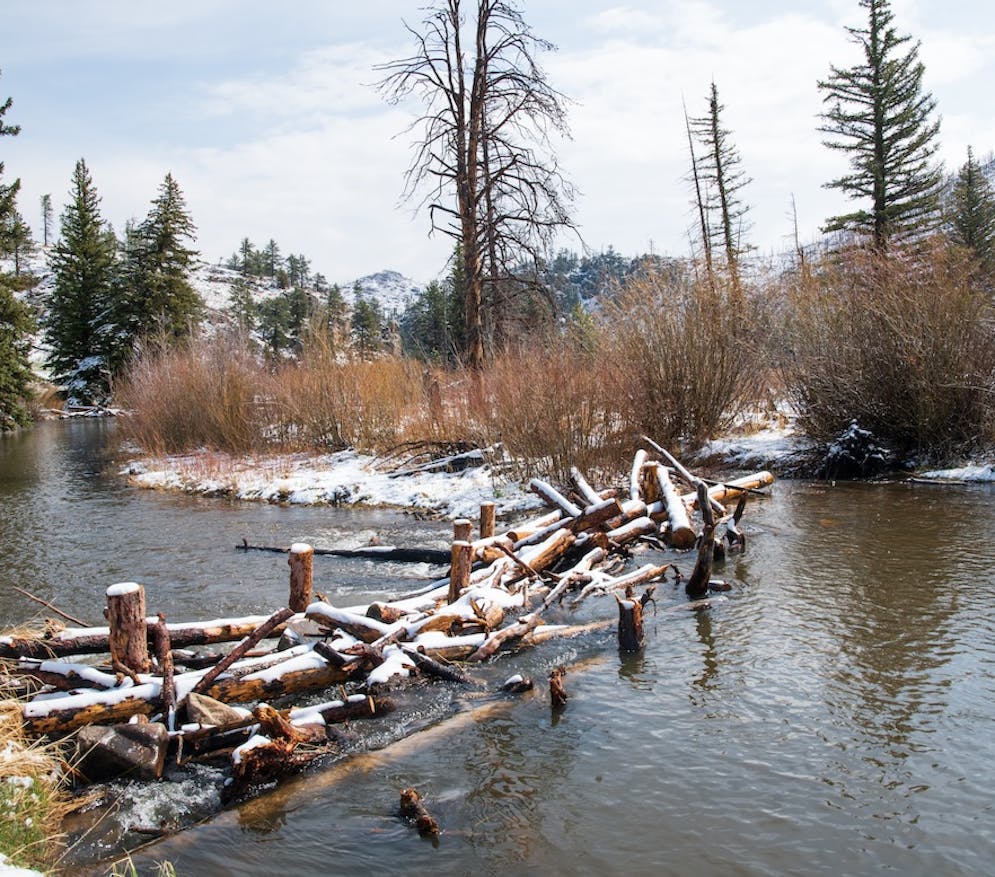Restoration structures already showing impact
The response to the Engineered Log Jams and other structures we installed last year at the South Fork site has been almost textbook for process-based restoration. As high flows from snowmelt runoff travel down from the mountains, they hit the wood structures and slow down - much like cars braking as they approach a speed bump. This spreads water across lower portions of the floodplain, increasing moisture in areas where we hope to see riparian vegetation expand in future years. Thanks to our partnership with Colorado State University and Rocky Mountain Research Station, we hope to quantify that expanded soil moisture over time.
Planting locally adapted species
Earlier this month, we planted 300 cottonwood stakes that had been collected downstream of the South Fork site and grown for a year in a local nursery. This extra year allows the plants to grow larger, giving them a better chance of survival. We also collect cuttings close to the site, so they’re adapted to local conditions like temperature and precipitation. Another 300 willow stakes, collected the previous year, were also planted to help expand riparian vegetation.
Wildlife-friendly fencing
To protect plantings and new growth responding to increased moisture, we’re building buck-and-rail fencing around the area. As this is public land used for multiple purposes (including grazing), the fencing helps exclude livestock and prevent trampling. It will not exclude native wildlife, which can jump, step, or crawl over or under the wooden fence.
Beavers join the effort
Finally, increased pooling behind the structures continues to draw in beavers, who are cutting willows from channel banks and adding them to our structures. We continue to see evidence of beaver activity, and the addition of finer, branchier materials has created a positive feedback loop - less porous structures slow water further, push it out onto the floodplain, and create more habitat for riparian species like the beaver!






